
by Purba | Apr 8, 2024 | Style Analysis of Famous Characters |
Brad Pitt isn’t just a Hollywood star; he’s a fashion icon whose style has left a lasting impression on generations. In this comprehensive article, we delve deep into the essence of Brad Pitt’s style, exploring the key elements that have made him a fashion icon for decades.
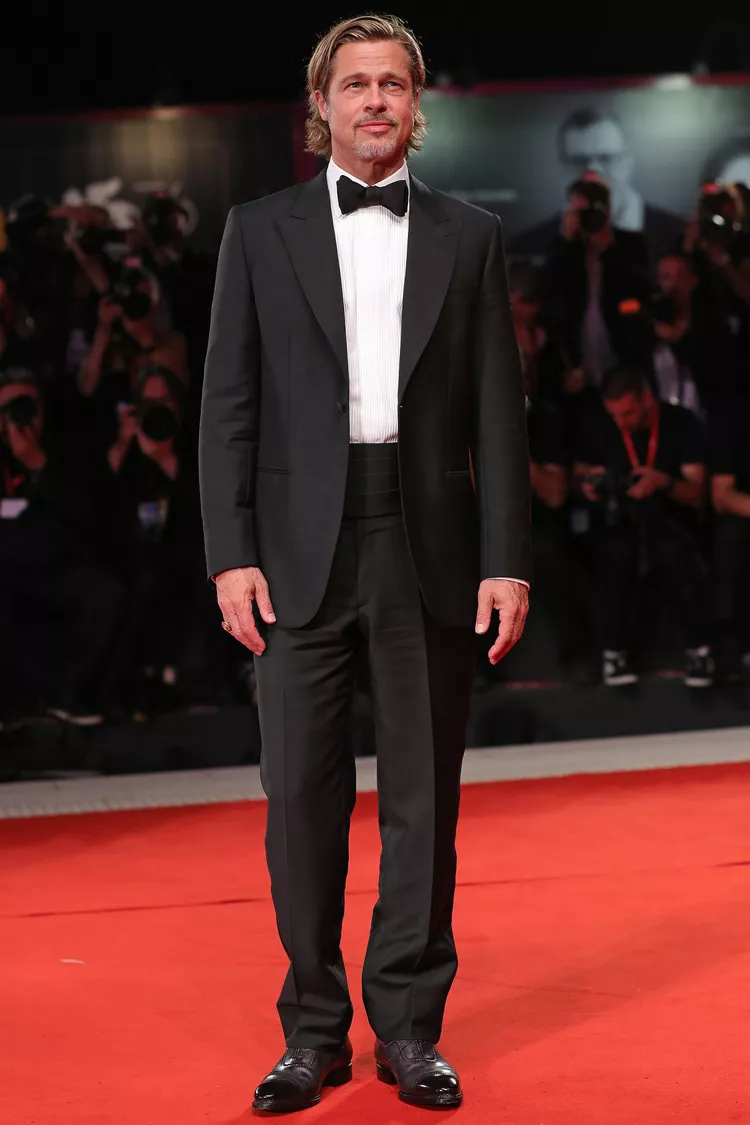
Figure 1: Brad Pitt on the red carpet. Photo: Vittorio Zunino Celotto/Getty images
Discovering Brad Pitt’s Signature Look
Brad Pitt’s style can be described as a perfect blend of classic sophistication and modern flair. Whether he’s gracing the red carpet or strolling down the streets, Pitt always exudes an aura of confidence and refinement. One of the hallmarks of his signature look is his ability to effortlessly mix casual and formal elements, creating outfits that are both polished and relaxed.

Figure 2: A candid shot of Brad Pitt in a tailored suit.
Embracing Timeless Classics
At the core of Brad Pitt’s style lies a deep appreciation for timeless classics. He often opts for wardrobe staples such as well-fitted suits, crisp white shirts, and tailored blazers, which serve as the foundation of his wardrobe. Pitt understands the importance of investing in high-quality pieces that never go out of style, allowing him to effortlessly transition from one occasion to another with ease.

Figure 3: Brad Pitt in a classic white shirt and tailored blazer, highlighting the timeless appeal of this wardrobe staple.
Effortless Casual Chic
While Pitt certainly knows how to dress to the nines for formal events, he’s equally adept at mastering the art of casual chic. Whether he’s running errands or enjoying a leisurely day out, Pitt manages to look effortlessly cool in his laid-back ensembles. From perfectly worn-in denim jeans to cozy cashmere sweaters, he effortlessly combines comfort and style, proving that you don’t have to sacrifice one for the other.
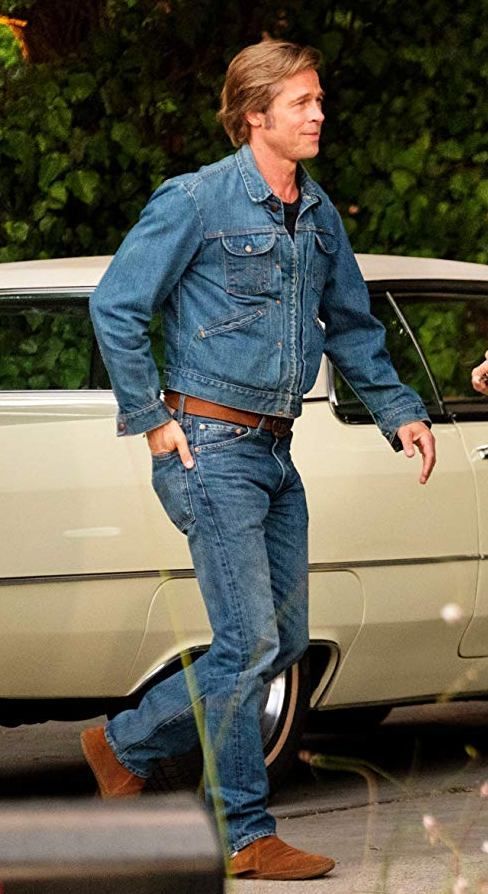
Figure 4: Brad Pitt in a casual denim ensemble. Courtesy: Pinterest.
Attention to Detail
One of the defining characteristics of Brad Pitt’s style is his meticulous attention to detail. From the way he rolls up his sleeves to the choice of accessories he pairs with his outfits, Pitt understands that it’s the little things that can make a big difference. Whether it’s a statement watch or a well-worn pair of boots, each element is carefully curated to enhance his overall look without overpowering it.

Figure 5: Brad Pitt wearing a bracelet. Courtesy: Pinterest.
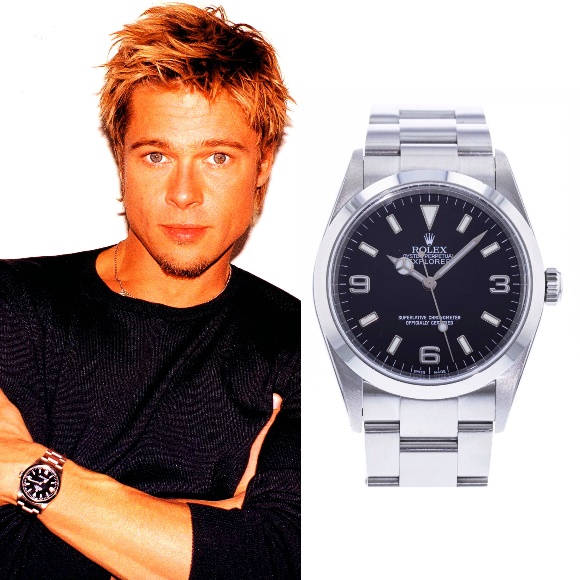
Figure 6: Brad Pitt’s watch.
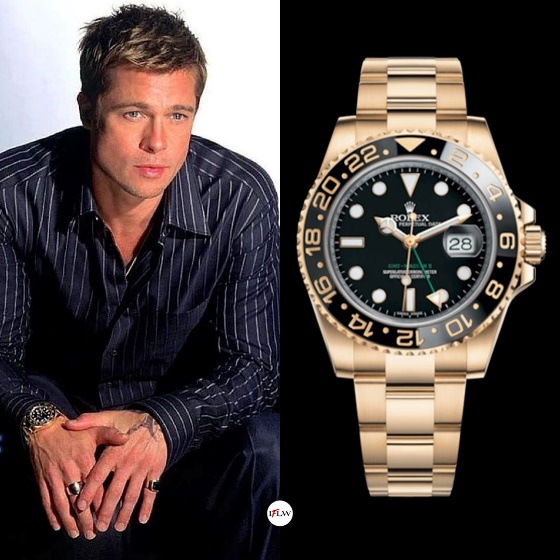
Figure 7: Brad Pitt’s watch.

Figure 8: Brad Pitt wearing glasses.

Figure 9: Brad Pitt wearing glasses.
Adapting to Trends
Despite his penchant for timeless classics, Brad Pitt isn’t afraid to experiment with the latest fashion trends. Whether it’s incorporating bold prints or experimenting with unconventional silhouettes, Pitt always manages to put his own unique spin on current styles. His willingness to take risks and step out of his comfort zone sets him apart as a true fashion trailblazer, inspiring countless admirers to embrace their own sense of individuality.
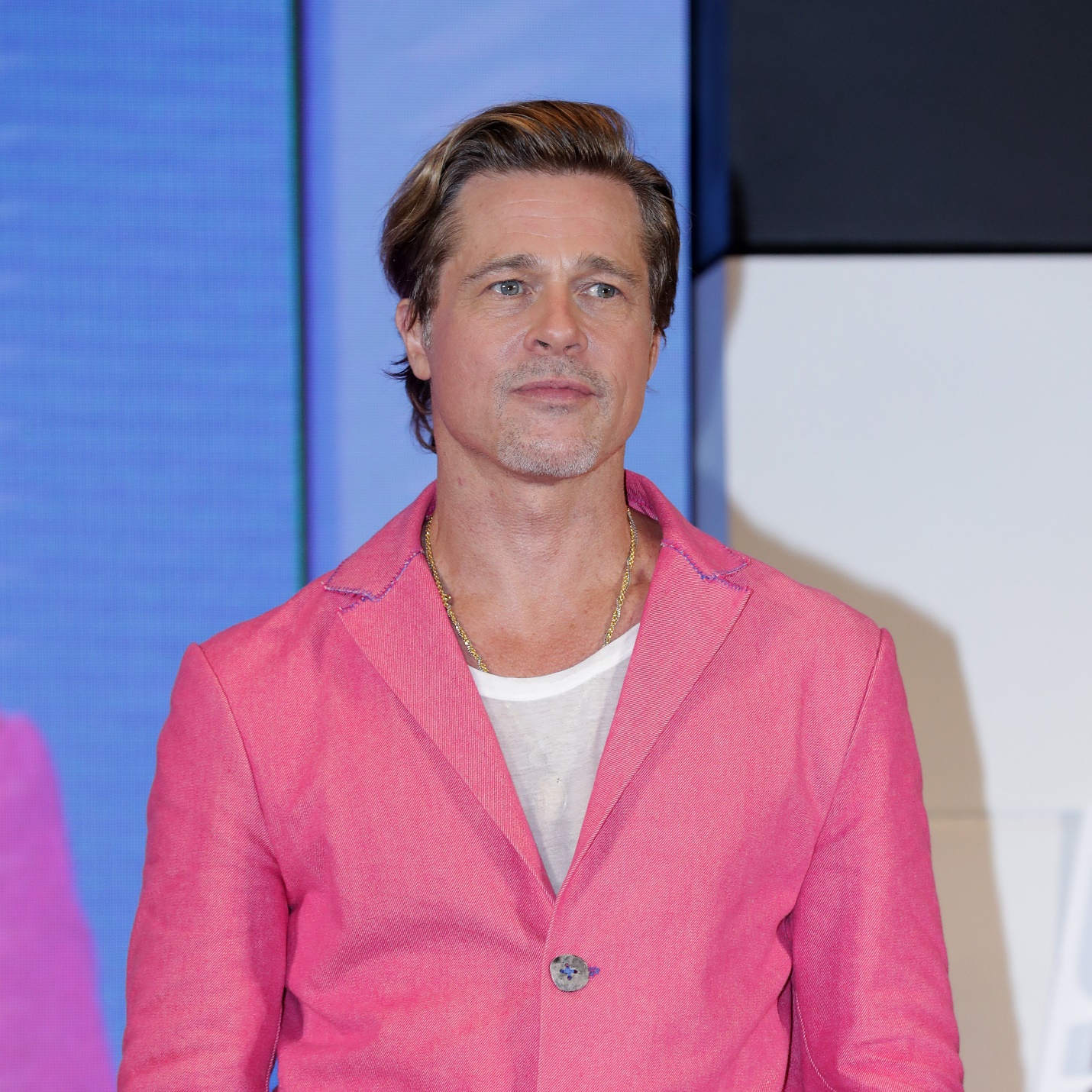
Figure 10: Brad Pitt in pink.
Confidence is Key
Above all, what truly sets Brad Pitt apart as a style icon is his unwavering confidence. Whether he’s dressed to the nines or keeping it casual, Pitt carries himself with an effortless grace and self-assurance that is truly captivating. His confidence not only enhances his overall appearance but also serves as a reminder that true style is about more than just the clothes you wear—it’s about owning your look with confidence and charisma. Brad Pitt is always confident, whether he is playing the great warrior Achilles or Tyler Durden in Fight Club.
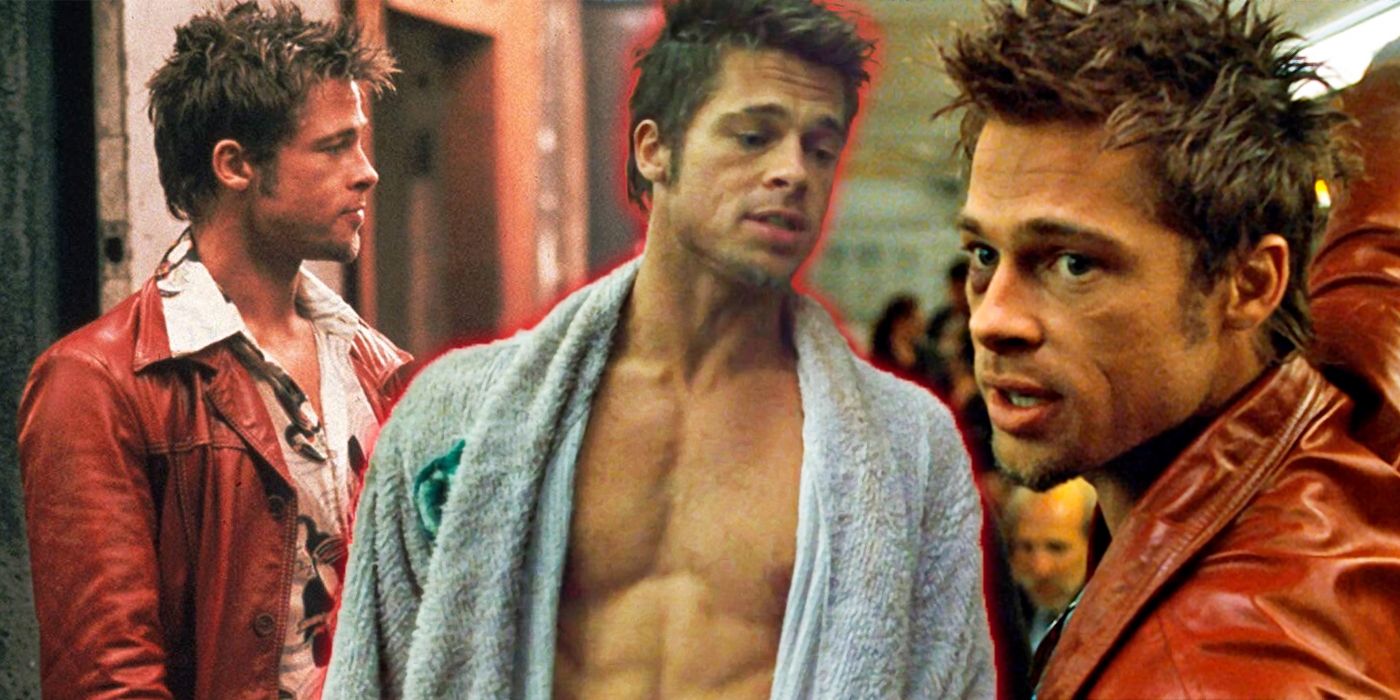
Figure 11: Brad Pitt exuding confidence and charisma, capturing the essence of his iconic style. Brad Pitt in Fight Club, the movie.
Get the Look: Brad Pitt’s Style Essentials
When it comes to emulating Brad Pitt’s iconic style, having the right wardrobe essentials is crucial. Let’s delve deeper into the key pieces that define Pitt’s signature look and how you can incorporate them into your own wardrobe:
- Tailored Suit: Brad Pitt’s mastery of the tailored suit is unmatched. Whether he’s attending a red carpet event or a formal gathering, Pitt knows how to command attention in a perfectly fitted suit. To channel his timeless elegance, invest in a well-tailored suit in classic colors like navy, charcoal, or black. Pay attention to the fit—opt for a jacket that nips in at the waist and trousers that skim the legs without being too tight. A quality suit will not only elevate your appearance but also exude confidence and sophistication. Real Old Money offer tailored menswear essentials that reflect this timeless aesthetic without breaking the bank.
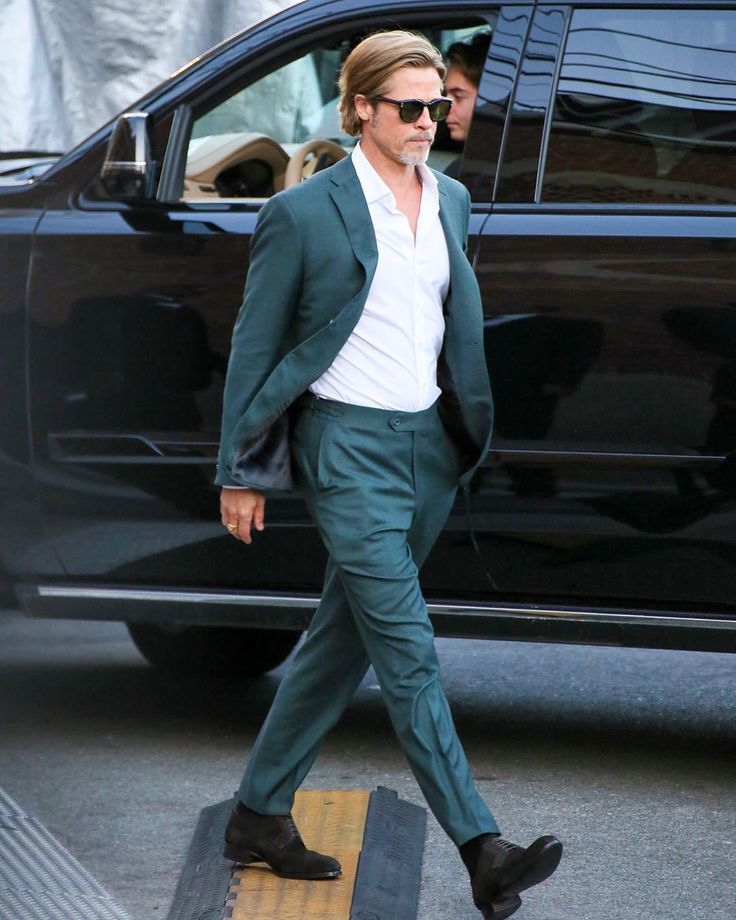
Figure 12: Brad Pitt’s tailored suit.
- Crisp White Shirt: A crisp white shirt is a wardrobe staple that Brad Pitt often incorporates into his looks. This timeless piece serves as the foundation of many of his outfits, adding a touch of refinement and versatility. Look for a shirt with a tailored fit and quality fabric for a polished look. Whether paired with a suit for a formal occasion or worn casually with jeans, a white shirt is a must-have essential for channeling Pitt’s classic style.

Figure 13: Brad Pitt’s Crisp White Shirt.
- Classic Denim: Even in his most casual moments, Brad Pitt maintains an air of effortless coolness with classic denim. Whether it’s a pair of well-worn jeans or a denim jacket, denim is a key element of Pitt’s laid-back aesthetic. To emulate his style, opt for slim or straight-leg jeans in a medium wash, which offer versatility and timeless appeal. Pair them with a crisp white shirt or a relaxed t-shirt for a casual yet polished look that channels Pitt’s effortless charm.
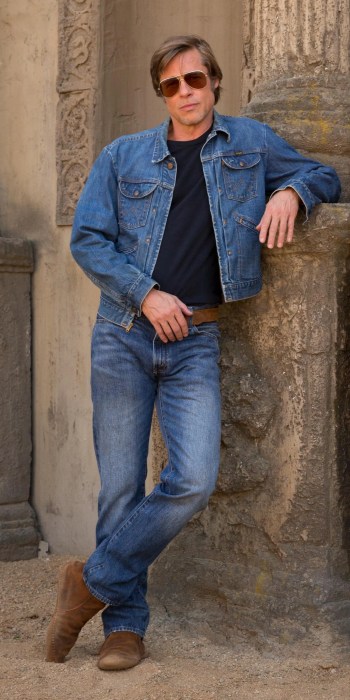
Figure 14: Brad Pitt’s classic denim.
- Leather Jacket: No discussion of Brad Pitt’s style would be complete without mentioning the iconic leather jacket. A staple in his wardrobe, the leather jacket adds a rugged edge to Pitt’s ensembles and exudes effortless coolness. To capture his rugged yet refined aesthetic, invest in a high-quality leather jacket in a classic silhouette, such as a moto or bomber style. Opt for genuine leather for durability and authenticity, and choose a versatile color like black or brown that will complement a variety of outfits.
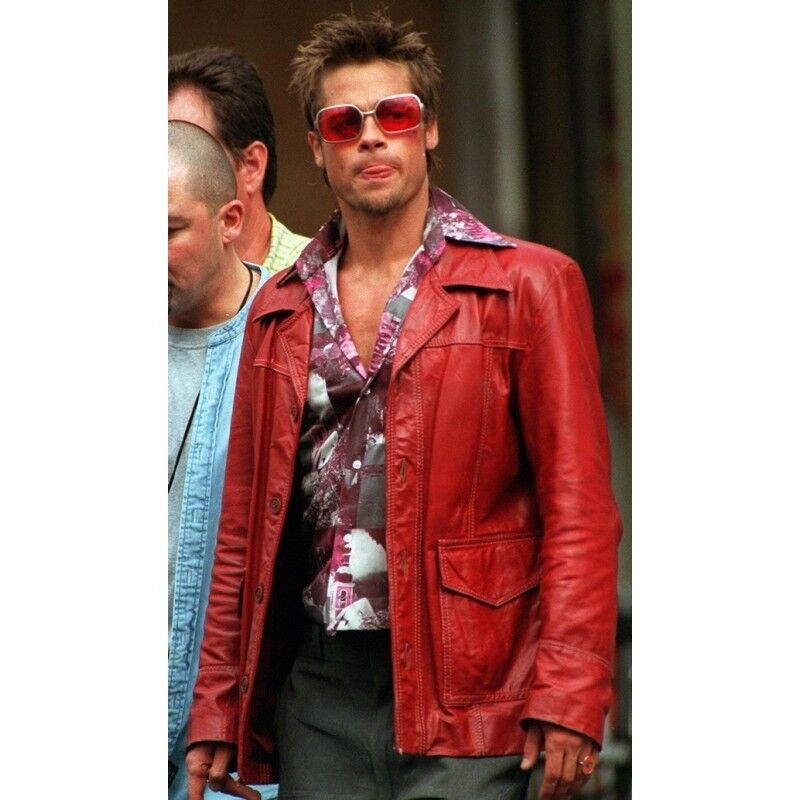
Figure 15: Brad Pitt’s leather jacket.
- Statement Accessories: To elevate his looks and add a touch of personality, Brad Pitt often incorporates statement accessories into his outfits. Whether it’s a stylish watch, a classic pair of sunglasses, or a vibrant scarf, accessories play a crucial role in defining Pitt’s signature style. To emulate his look, choose accessories that reflect your personality and complement your outfit. Whether you opt for a sleek timepiece, a pair of aviator sunglasses, or a patterned scarf, let your accessories be an expression of your individuality and style.
Incorporating these key pieces into your wardrobe will help you channel Brad Pitt’s iconic style and exude confidence and sophistication in every outfit. Remember, it’s not just about what you wear—it’s how you wear it. With the right pieces and a dash of confidence, you can capture the timeless elegance and effortless coolness that define Brad Pitt’s legendary style.
Tips for Embracing Brad Pitt’s Style
- Invest in Quality
- Pay Attention to Fit
- Mix and Match
- Confidence is Key
Brad Pitt’s Influence Beyond Fashion
Beyond his impeccable sense of style, Brad Pitt’s influence extends far beyond the realm of fashion. In this section, we explore the various ways in which Pitt has made an impact beyond what he wears.
Brad Pitt’s Enduring Legacy
In conclusion, Brad Pitt’s style is a testament to the power of timeless elegance, effortless chic, and unwavering confidence. Whether he’s sporting a tailored suit on the red carpet or rocking a casual ensemble on the streets, Pitt always manages to leave a lasting impression with his impeccable sense of style. By embracing classic pieces, experimenting with trends, and exuding confidence in everything he wears, Brad Pitt has solidified his status as a true fashion icon for generations to come.
Conclusion:
Thank you for joining us on this journey through the timeless elegance of Brad Pitt’s style. From his signature looks to his influence beyond fashion, Pitt continues to inspire and captivate us with his impeccable sense of style and unwavering confidence. As we celebrate his enduring legacy, let us also remember the valuable lessons he teaches us about embracing our individuality, owning our look, and making a lasting impact on the world. Brad Pitt may be a Hollywood star, but his influence reaches far beyond the silver screen—he’s a true icon in every sense of the word.
You can also read:
Unveiling the Timeless Elegance of Cillian Murphy’s Style
Hermione’s Style: Timeless Elegance and Intelligence
Harry Potter’s Style: From the Boy Who Lived to a Fashion Icon
Embracing the Iconic Style of Robert Downey Jr.: A Dive into the Fashion Sense of a Hollywood Legend
Benedict Cumberbatch: The Epitome of Timeless Style
Thomas Shelby’s Iconic Style: Unraveling the Sophistication
Aunt Polly’s Style Breakdown: Unveiling the Iconic Style of Peaky Blinders’ Matriarch
Sherlock Holmes’ Timeless Style
Achilles Dress Style: A Timeless Symbol of Strength and Elegance
Cristiano Ronaldo’s Fashion Legacy: From Pitch Prodigy to Style Icon
You can write to us at fashionnovationfd@gmail.com
We read and publish your well-written articles!
![Transformation in Fashion Industry]()
by Purba | May 8, 2021 | Top fashion news |
In this era, to be “out of fashion” is indeed to be out of the world. Why so? Well, we already know the reason. Fashion, which is as old as time and as new as tomorrow, is one of the most powerful forces in our life. It influences every sector of our lifestyle. So, to understand the living, breathing and evolving transformation in fashion industry is a need of the hour!
Although the Fashion Industry is considered to be the most glamorous and dynamic fields in the world, it is also difficult, demanding and unpredictable.
Despite the enchanting interplay of creativity, business hype and marketing wit, everything comes down to the bottom line if the fashion companies can’t get profit up to the mark.
In recent years, the fashion industries have undergone dramatic restructuring. The industry does not resemble the one that existed 20 years ago.
Just as fashion products change, the industry itself keep revolving. However, we have seen fashion retailers competing with each other to provide newly fashion trends revealed by fashion shows and runways.
Here are some factors which are driving the transformation in fashion industry:
Elevation of mass production
Prior to the mid 1980s , success in the fashion industry was dependent on low cost mass production of standard designs that did not change often due to the design restrictions of the factories. Evidently, consumers during that time were less conscious of style and fashion and mostly preferred basic apparel or wearings.
Fashion garments began to be mass produced towards the mid-20th century. People began to have more choices of garments as the bulk of production increased.
At the end of the 20th century, fashion awareness among people raised on the top, and they began to choose comfy as well as stylish clothes for themselves, instead of counting on the trends prevailing in the market.
Fast Fashion
Fast fashion is a very known term that has allowed anyone to dress following the latest trends whether he or she has the least of fashion sense.
Spending a little amount but dressing in a different way has become the norm for most people in the last two decades, and that is the reason driving the success of the “fast fashion” trend.
Customers love to see various products or designs every month and this has led to an increase in the demand for new fashion collections over a smaller span of time. And so, to be profitable in the industry, apparel retailers need to take the ‘speed to market’ approach to make profit on fashion that is not in the stores of their competitors.
By emerging small collections of merchandise, fashion retailers encourage consumers to visit their stores more frequently with the idea of ‘Here Today, Gone Tomorrow’. And it surely indicates a shorter life cycle of a particular design or a garment.

Difference in the styling of apparels. Courtesy: Pinterest.
Technological Impact
There was a time previously when the creation of garments required much time and skill, whereas today they are realised within a matter of minutes.
However, today is a combination of all techniques to have been practiced until now. Such as, some designers love to work with the very ancient spindle techniques for their woven styles, but might use a 3D printer for their footwear or ornaments.
The development of technology gives designers a wide choice of techniques to use and it arises constant opportunities. Moreover-
- Nowadays traditional design methods are being replaced by CAD (Computer-Aided Design), CAM (Computer-Aided Manufacturing) or many other designing platforms which minimizes the time of sketching on paper, draping fabrics on mannequins or having a proper measurement. And so these technologies allow the designers to make any kind of changes required for the desired silhouette or fabric trimmings.
- For having a true-to life garment visualization or virtual sampling, we can now easily use some 3D designing software like CLO, Marvelous Designer, MAYA, TUKA 3D etc. Most of our fashion industries get benefited from these 3D garment simulations; as these have gradually reduced the machinery cost or labour cost.
- High-intensity lasers or computer-guided knives are a great replacement of traditional pattern making system as one can get many layers of fabric all at once. But these technologies are mainly used in making expensive apparels.

Pattern making. Courtesy: Pexels.
The assembling of ancient and modern techniques depicts that designers can choose the most sustainable options, and drive the evolution of fashion towards sustainability.
Online shopping & E-commerce for smoothing the digital transformation in fashion industry
Today’s digital world is more and more interconnected with our fashion industry. Digital platforms are becoming prevalent in the fashion market. Every now and then we can see many new brands are emerging with the development of e-commerce, which allows companies to engage consumers through virtual reality.
- The global pandemic (COVID-19) has transformed the way consumers behave and made it amply clears how technology can be lifted to accumulate sales even when consumers are locked in their homes.
- Another withholding factor to the rise of e-commerce is the availability of smartphones and devices. Moreover, there is a huge upsurge in 4G and 5G adoption, which indicates a developed infrastructure of a country.
- While renowned fashion businesses have already joined the e-commerce bandwagon, small shops or boutiques are now also seen entering the homes of prospective buyers via fashion apps, social media pages and garnering followers. As a result, customisation has evolved; creating one’s own shopping basket, having discounts and loyalty points on shopping sites have now become a rewarding experience.
- During this social media era, the fashion industry is experiencing the increasing role of influencers, as consumers look at their lifestyle as more authentic and attractive than habitual advertisements. Influencers are considered as close to the common people because they are not models and are not forced to make a campaign, but wear what they like and what flaunts their body well; they also show their outfits during regular days or in common. Thus it gets easier for ordinary people or customers to adopt the trend followed by the influencers.
The adoption and popularity of e-commerce have manifested that being digital is the only way forward. As consumers build on their impulses, fashion platforms need to up their game to personalize their offerings to the varied tastes and build predictability within their boundaries, to better purchase experiences.

Customization of a particular attire brings the transformation in fashion industry
Personalization:
Consumers have become more squeamish and more demanding during the last few years. It builds a high expectation for quality products among the consumers. They choose fashion items according to their values and their personal style. To cope up with the expectations, fashion companies have to understand how to offer product that customers will perceive as unique. Many fashion companies have followed this trend by enlightening their product portfolio and becoming more and more “multi-style brands”.
Sometimes the company has to think about what is the difference that makes the product of a brand incomparable for both customers and competitors. A wrong choice can instantly destroy the brand reputation, thus they have to be very careful with the selection.
The fashion industry is one of innovation, vision and diversity. And of course, we do not need a reminder of this, but in the fast pace of life, it can be easy to get caught in the rapid movement of our works with all the deadlines and trends. We need to juggle with our innovative ideas, customer feedback and our internal communications as well as to create beautiful and sustainable garments as quickly as possible, following the brand’s image and values.
By Team Saturnine,
Mentor: Tanvir Ahamed Fahad; Id:2018-1-6-026
Leader: Atkia Faiza; Id: 2019-1-6-020
Executive: Md. Asaduzzaman Ovi; Id:2020-1-6-020
Dept: Textile Fashion & Design
Photo References:
- Image 1: Unsplash
- Image 2: Pinterest
- Image 3: Pexels
- Image 4: Pexels
You can also read another of our premium content on Fashion in the 21st century!
If you are interested in architecture and fashion, you can also read Architecture Fabric: The New Use of Textiles as A Building Material
Cybersecurity in Fashion: How SpamTitan Helps Protect Fashion Brands from Cyber Threats

by Purba | May 3, 2021 | Fashion and sustainability |
It is a common consideration to believe that the ‘small’ amount of unsound household waste each individual produces, creates such a minimum impact on the world. But if you take into detail there are approximately 7.4 billion people in the world, this number becomes horrible. The amount of unsound waste generated and disposed of, in the United States alone, is measured to be 7.6 billion of tons per year! Most of the wastes that are filling our oceans and landfills are enduring for quite a long time. And what is the saddest part? The fashion industry is one of the most wasteful industries. Undoubtedly, in the last 15 years, this glorious industry has doubled its production, but at the same time, the concept of wearing clothing before it is thrown away has declined by 40%. An average consumer throws away 70 pounds (31.75kgs) of clothing per year! Globally about 13 million tons of textile waste is produced each year. These trends of making waste are not only killing our planet or impacting on public health, but also they are bounding the opportunities for the fashion industry to succeed in the distant future.
The Story of The Rise of The Phoenix- An Invisible Bond with Modern Fashion
According to Greek Mythology, it is said, the glorious ancient bird Phoenix is capable of its rebirth. A Phoenix is said to live only once at a time. When the time comes, unlike any other birds, a Phoenix would die by setting itself on fire, only to produce mysterious ashes. The ashes from where a new Phoenix would be born! Thus, a new and powerful Phoenix regenerated from the silver ashes of its predecessor.
Modern fashion activists can relate to this concept of rebirth and regeneration. The wastes produced from the industry can be depicted as the new definition of ashes and of course, the upcycled creations from these wastes would be our new Phoenix! Nonetheless, the household or textiles wastes can be the opportunity to make new fashion and be the new hope for saving the planet.
10 Fashion Brands to Regenerate New Designs from Waste
Many fashion brands have already been working on waste and designing out of it in an innovative way. Let’s get to know some of these fashion brands and how they challenge waste to create sustainable fashion!
Ecoalf
Ecoalf, a fashion brand of Spain produces clothing and accessories from recycled materials. Their main motto is to use a lesser amount of natural resources and utilize high amount of plastic wastes. Hence, they recover nylon waste (fabric scraps, fishing nets from the oceans and carpets), plastic bottles, cotton, coffee grounds and more to create fabrics and products. But its main target is recycling plastic waste collected from the bottom of the oceans. Ecoalf definitely contributes themselves in the production of garments made out of 100% recovered plastic as they claim, “There is no planet B where we can live in.”
Collina Strada
Collina Strada is a clothing brand created by Hillary Taymour, whose main concern is sustainable fashion while still keeping their individuality. This brand makes brightly colored dresses with unusual designs from deadstock fabrics. It recycles cotton T-shirts, water bottles and prints on deadstock too. Besides, it works for reducing waste, the brand focuses on incorporating innovative new materials such as fabrics made from rose petals which is known as Rose Silk!

Image 2: A vibrant Collina Strada creation for PreFall Season 2021.
Hôtel Vetements
Hotel Vetements is a French-Danish love affair by the Danish Fashion Designer Alexandra Hartman. The journey started with the transformation of high-quality yet old curtains to sophisticated pieces of modern clothing. Moreover, the brand creates upcycling, artisanal apparel not only from forgotten curtains and upholsteries but also from hand-embroideries, linen textiles, tablecloths, cotton sheets from provence and much more. As a result, each garment has their own style of vintage effect. More so, no two items are similar. They support uniqueness and imperfection of each beautiful artifact.
Zero Waste Daniel
Zero Waste Daniel is the first company making 100% zero waste apparel. This company uses pre-consumer waste sourced from New York city’s garment industry and other hard-to-recycle materials to make genderless clothing and accessories with artistic creations. Many of their unisex garments are textile off-cuts produced by the fashion industry. These off-cuts are stored in tiny jars and later used to be used in the making of casual wear garments. The brand, hence, recreates textile by products as well as inspire people to rethink about waste and reduce their impact.

ZWD storage of scraps of fabrics in tiny jars. Courtesy: Vincent Tullo for The New York Times
Iro Iro
Established by Indian daughter of a garment factory owner, Iro Iro is a sustainable design practice where each product gets new life from pre-consumer waste fabric. Then, this fabric is woven by hand outside of Jaipur into a rich textile fabric. Artisans take advantage of this handwoven, upcycled textiles to create ingenious clothing and accessories through zero waste cutting techniques. During the processing, Iro Iro establishes the essence of Indian craftsmanship and tradition.
E.L.V DENIM
Anna Foster, a Stylist and Creative Director, is also the founder of E.L.V. Denim. This brand upcycles unwanted jeans and jackets and transforms them into modern sophisticated pieces of clothing. Their recycling journey starts by taking unwanted jeans from warehouses around the United Kingdom. Then the washing process starts using a local East London launderette called Cleanex run by Korosh Murad. This washing process is vital which removes unnecessary materials from the discarded pieces of denim. Cleanex is well known for using only 7liters of water to wash the fabrics, where a brand new pair of manufactured jeans would require 7000liters! After washing, the denims are measured and sorted for the atelier. All the jeans are cut manually and made by using traditional denim methods. Even the labelling has their concept of sustainability. The labels are made from scraps of unused pieces of leather, ensuring the zero-waste policy! Thus E.L.V. completes their mission of preparing neoteric sustainable dresses without environmental pollution, assuring what the designer, Anna Foster, herself quoted-
“Sustainability is the ultimate part of what I do. We live in a very aesthetic world, so a successful brand has to marry carefully the two of them together.”

Image 4: Anna Foster with waste denims collected throughout UK. Courtesy: elvdenim.com
Doodlage
Kriti Tula is a designer, also the Founder of Doodlage Retail. She and her Doodlage team upcycles industrial waste fabric into wearable fashion, upholstery and accessories. According to the article of Reverse Resources, about 12 million tons of post-consumer textiles are available to be reused and upcycled. Relating to this concept, Doodlage generates pieces from tattered textiles and materials found. Therefore, they hunt for the ragged material first, and enter into the design process second. They collect all sorts and sizes of fabrics, from under 100 meters to very short ones. All the relevant fabrics are then mixed and matched with a follow-up of patching, embroidering and more. This is how Doodlage pieces are restored to life.
Christy dawn
Christy Dawn is the founder of Christy Dawn. She and her husband launched the company. It consists of dresses made with only deadstock fabric. The question is, what is exactly deadstock fabric? Normally, deadstock fabrics are those that are old and unable to be sold. In modern era, deadstock fabrics particularly refers to all those that are left over from other fashion houses. Before they are thrown away in the landfill, Christy Dawn and team, rescues these deadstock fabrics and turn them into dresses. But one of the disadvantages they follow is that, when they use deadstock fabrics, they are limited in the number of dresses they can make, as there are not unlimited amounts of fabric to be used to make a full fashionable garment.
Outerknown
Designer & Surfer John Moore co-founded Outerknown with 11-time world surfing champion Kelly Slater. From their very start, this brand had a challenge to build sustainable products. The brand makes comfortable and casual beach style clothings rooted in longevity and transparency. Over 90% of Outerknown’s products are made from organic, recycled and regenerated fiber and materials. One of their most amazing route to sustainability is the use of Econyl! Econyl is a type of nylon made entirely of wastages. Since Outerknown is highly inspired by beach styles, due to the inspirations collected from the 2 surfer co-founders, this brand collects fish nets to turn them into econyl fibers. It is one of their fascinating ways to clean the ocean!

Famous S.E.A Jeans by Outerknown- an outcome from 98% organic cotton that lasts long. Courtesy: outerknown.com
Insecta
The founders of Insecta are Pamela Magpali and Barbara Mattivy. It’s a Brazilian shoe label that transforms fabrics and prints from vintage clothing into vegan footwear. Not only that, this brand is highly known for their application of plastic bottles in the manufacturing process! Insecta makes awesome fashion lines that includes shoes, desert boots, sandals and Chelsea boots using recycled plastic, unwanted rubber and second-hand textiles materials.

Image 6: A printed Insecta shoe made entirely out of plastic! Courtesy: shopinsecta.com
It is certain, any upcycled textile reduces the chance of negative environmental impact. Anything that is made out of waste, now is a new way of thinking and creating fashion in a different manner indeed, just like a Phoenix would start its life anew!
By Team Bespoke,
Mentor: Tasphia Zaman (TFD 44, ID: 2018-1-6-009)
Leader: Khadiza Sharmin (TFD 45, ID: 2019-1-6-015)
Executive: Nahema Haque Khushe (TFD 46, ID: 2020-1-6-002)
References:
by Purba | Apr 28, 2021 | Top Trends |
Fashion trends have always been forecast before years to come considering the existing data we have at our hand. But who knew that there will come a pandemic like Corona? So, what about the Fashion Trends 2021? As we all are passing a pandemic situation right now, we can say that it affects our fashion industry too like others. A lot of things have been changed. Some fashion shows were stopped for this pandemic situation. But now we are coping up with this situation. Now the virtual runway shows viewed from our laptop screens give us a taste of the exciting trends on the horizon for 2021. I can say undoubtedly if there was ever a time for a dose of fun, it’s 2021. Neutrals have dominated fashion for the past few seasons, we’re also seeing that reflected in the fashion on the runways. The biggest color trends of 2021 are giving people a sense of hope, optimism, and the refreshment that many are looking for. Rather than a standout hue, we’re seeing saturated shades in a rainbow of colors at Prada. The Pantone Color Institute is choosing bright and soothing colors that takes inspiration from natural elements. This year bright and eye-catching hues are their first choice. The Bright Yellow color refers to evoke hope and optimism after the tumultuous year. The color gives the message of unity, stability and hope. The Deep Teal color is inspired by the calm of the ocean. The Off-White is also steeped in hope and optimism. Its inspiration comes from the pandemic’s craze of baking at home. Fortuna Gold is also their pick ones as it represents the chance happenings and happy coincidences found in life’s moments. They think rich Marigold color will evoke a cozy and friendly vibe. The Powdery Blue is another color that they expect to be big for its calming nature. The Deep Navy color is said to be solid and very intensive and can be used as a great background color. This year the Burnt Red-Orange color is said to have a season less appeal. The French Blue shade will be popular with people who favor the color and are looking for a new shade. The Pastel Green color goes along with the trend of gardening, hiking and other outdoor activities that have become more popular during the pandemic. The Pink-Orang is said to evoke a sense of familiarity and comfort, especially because Coral was a recent Pantone Color of the year. Also, Mint is a refreshing and cleansing color. This year Amethyst Orchid will be popular as far as the prediction. As the Fuchsia color has both warm and cool properties it will be one of the trendy colors. Same goes for Desert Mist. So, we can say that this year will be a colorful and lively year. Another trend that is dominating this year has been Pastel colors. Choose from a boiler suit in cool mint green or an oversized trench coat in soft lavender better yet, try them simultaneously. Among 2021 fashion trends, anyone can pick Bubblegum Pink without any hesitation. Now, let’s have a look on what’s in for 2021. There’s a lot to adopt and skip. The designers ask to adopt sheer, transparent pieces this spring. As our “lockdown life” has been less exciting it’s time for lifting up our mood by wearing color and patterns. Screen-prints can make you feel more artistic. If you are a fan of basics, so Basic Maxis will be one of your cheerleaders. This long line, flattering dresses are the best for comfy. We’ve already seen a glimpse of Warp Skirts in 2020, and in 2021 this trend will comeback with the updated hemline length. Here, oversized Jackets and Blazers with a pair of straight-leg trousers or leather shorts for an ultra-modern style that suit this trend are powder blue, charcoal, and neutrals. Now, Puffed Sleeves are one of those things which are loved by all. In 2021, everyone is adopting Straight Denim Styles and more Relaxed Fitted Jeans and skipping hot pants. Some like Low-Rise Pants as it is so comfortable where some loves Baggy Jeans. It can be little basic, but styling them with different textures and tighter fitting tops will be so cool. Therefore, go all out this season with these beautiful and tangled Folk Inspired Coats. When the temperature starts to drop, you can add some layers of delicate embroidery and lace to keep your outfit hot. The style looks fantastic on every body type. We can try a light brown suit or coat with a mustard turtleneck for the cold season or a sleek tan T-shirt and camel pair of flare pants. This subtle yet flattering combination is the hottest style we can say to try this season. The theme is kept it neutral with Yellow and Camel color styling. Wear White Knee High Boots with a patterned mini dress or skirt, a roll neck, or a funky pair of leggings. It is great for a slouchy style for an effortless feel or keep it sleek and tight for a sexy touch. With that classic and comfortable Ballet Flats are back, and Block Heels gives us extra oomph and height. In this time, Yellow Bags have taken over the runways and the streets. You can choose a small clutch to spice up an outfit or find a mustard tote for your daily needs. Also, an Amber structured handbag with an all-white get-up, or a sleek canary baguette for a night out. At that time, one of the biggest looks we have seen is the Fringing on the bangs. Choose from a leather fringe or shearling- you can rock any season. For a classic look, choose dark hues. But if you want to be unique, take a dip into bold shades. This year 50s and 60s sleek fashion trend is coming back and Head Scarfs is one of them. We can choose from a silky design with floral motif or intricate patterns, or keep it simple with bold colors. This Covid situation gives us another fashion trend and that is Black Face Masks. These masks match almost any outfit. The beauty behind this face-covering is the limitless styling opportunities that comes along it. If you want to stand out among others, add Pop Blue Accessories in your closet. The amaze behind this trend is the unlimited number of options you can try throughout the season. This bright hue will stand out amongst the deeper shades. Add a pop of blue to your monochromatic outfit to update your go-to outfits and rock your key pieces. This is all about 2021 trends, which offered us whimsical escapes into future inspired by designer lockdown daydreams for spring 2021 last Fashion Week. This year is going to be a colorful and hopeful year by our outfits and accessories. By Team Never Passe! Mentor: Priyanka Sarkar Leader: Ria Debnath Dept: Textile Fashion & Design
Reference:
Featured photo: Woman In Pink Zip-up Jacket And Blue Denim Jeans · Free Stock Photo (pexels.com) Content: https://www.thetrendspotter.net/fashion-trends-spring-summer-2021/?fbclid=IwAR00c
Related articles:
Bimbo Fashion
To check our Christmas Trends of 2022, you can click here!
You can study the trends of 2019, 2021, 2022 and 2023 consecutively by clicking the following links:
Fashion trends of 2022 and Fashion trends of 2023.
Also as you’re interested in trends, we suggest you to read this premium article which features the fashion of the 21st century, its key trends and designers!
You can also read about the latest trends of Fashion nails or you can say nail art fashion trends!
Fashion nails and spa: Trends and where to get one?
![Transformation in Fashion Industry]()
by Purba | Apr 25, 2021 | Fashion and sustainability |
Whenever we are asking which cloth makes you feel comfortable while you are travelling? An answer always passes through your head and you look down to your pair of jeans. Yes, there lies the answer!
Jeans are made of denim fabric a famous fabric for its durability. But have you ever thought weather your jeans are ecofriendly or not? Or have you ever wondered if the fabric was made is a different way to make it strong? May be you have or may be you haven’t. If you have then hope this article will provide you with a best answer!
Why Denim is considered as strong fabric?
Denim were made for gold miners as their fabrics needed to be strong enough and could handle the hazardous work they do. And Levi and Strauss first invented the denim that could hold its shape even after working in the mines or other hazardous work and it didn’t need frequent washing. It started blooming since then, Then it made debut as a film dress and become popular in cowboy movies and western movies.
Special weaving process and rivets to keep it from ripping made it strong than other clothes.

Picture: Factory beside a river. Courtesy: Photo by Linda Finkin on Unsplash
Why is it considered as a non eco friendly fabric?
Talking about denim’s being not an eco-friendly fabric, we can sort the problems in a numerical order and denim has got problem in every step of its way to processing from cotton to
finished fabric. Here are the problems described and I have also described how they can be reduced to minimum.
Cotton Cultivation Process:
Cotton plants need a lot of water to start with and even one of the most pesticide using plants. So they are polluting water and actually consuming a lot of water. Producing just 1 kilogram (2.2 pounds) of cotton can require up to 7,660 gallons of water, depending on where it’s grown. So it’s a huge amount of water. Even workers who are working in the field are exposed to the chemicals that are used as pesticides.

Picture: Cotton. Courtesy: Photo by Amber Martin on Unsplash.
Dying process:
Dying process in the textile factory means dying the fabric with chemicals and colors as coloration process needs various chemicals to make the colors long-lasting. A series of chemicals are used to treat denim fabric and it’s colored with indigo color, a special color that lasts long enough to have the fabric
10/11 wash. 7.5 billion feet of denim fabric is produced every single year and they are repeatedly washed with water. A question may arise so what is the problem! We can use wasted water! But unfortunately we cannot do that as we have used the chemicals once and it has different ratio after one use. So the waters are wasted. It was noticed that Xintang, a town in southern China, the denim capital of word faced a disaster in 2013 . All of its rivers ran deep blue and smelled foul because the denim producers damped all the wasted water in the river.
Washing Process:
Washing denim is a process where a lot of chemical treatment is involved. While researching it was found that denim fabric contains heavy metal which can be disastrous for human life. After the pieces of denim is sewn together it is tossed into a variety of washing machine to gain the color or the faded color according to the trend and design.
So how to overcome this situation? Is there any solution to this problem? As human brain is the most sophisticated one, it has been searching for the solution for decades and a lot of solution has came forward. Let’s talk about that!
Hemp vs Cotton!
Hemp is often considered as a drug which is a miss conception. Levi the legendary brand of denim has found a technology to make hemp feel like cotton. They have blended 30% hemp and 70% cotton in their denim. Hemp produces fibers more than same amount of cotton and they need less amount of water to cultivate.
So it is a legendary step in the world of denim as denim is one of the most environment polluting industry in the world.

Courtesy: Photo by Rick Proctor on Unsplash.

Courtesy: Photo by Hanna Balan on Unsplash. Picture: Hemp vs Cotton.
Laundry system:
As we know the washing process need a lot of water so we need to reduce the amount of water. Some company has been trying to develop the environment. Pakistani denim company named Soorty has been trying to develoo a denim laundry system that is environment friendly and socially conscious. It has already invested to the most expensive wet denim processing plant in Pakistan. Later on they established A spinning space and in house recycling unit to recycle the wasted water.
This Industry needs to work altogether to reduces the effects and that’s why they made a joint effort in 2019 to go the greener way to reduce the pollution. The brands who have signed the commitment, they express their feeling as they are committed to creat a product or multiple products in adherence to the jeans redesign guideliness. Similarly, in fall 2020, Dutch and international brands signed the Denim Deal in Amsterdam, a pledge to reform and recycle jeans. The project, which is an initiative by House of Denim and the Dutch government, was started to create a circular economy and reuse more old denim garments.

Picture: Denim for future! Courtesy: Photo by Albany Capture on Unsplash.
It will continue as a debate topic that weather Denim is a fabric that we should put away or we should continue with it! But as long as I don’t have to wash my denim regularly and is made with latest ways, I am not leaving my most reliable “Friend Dress” Jeans!
Go green! Save the environment and wear jeans which are less hazardous to the environment!
By Team Bucolic Bohemian,
Mentor: Umme Memory Mim (Id: 2018-1-6-012) Dept: Textile Fashion & Design
Leader: Sabiha Moon Taha (Id: 2019-1-6-006) Dept: Textile Fashion & Design
Executive: Md. Mahmud Hosen (Id: 2020-1-2-006) Dept: Fabric Engineering
Reference:
If you want to read about a denim brand called Risen Jeans, you can go here! We’ve got you covered!

















